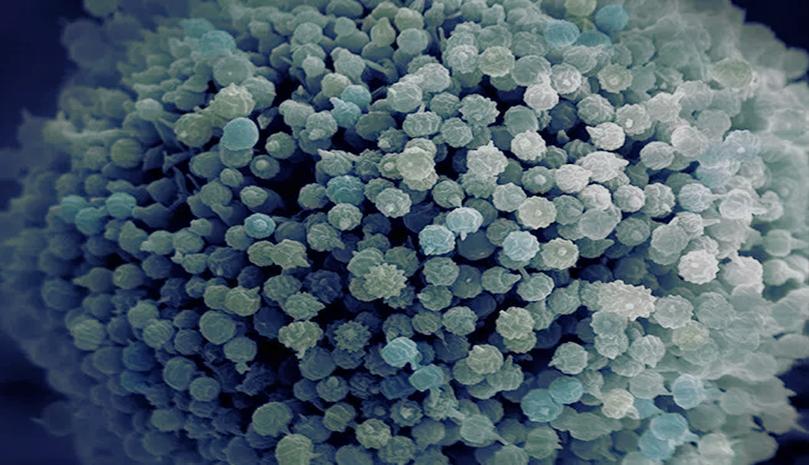
3 minute read
Promising Fungi for
Fungi have bee effective at bre substances, in recent study in fungi that were for waste disp LDPE bags. The results sh fungal strains able to break d one strain prov efficient. The f Aspergillus tub its DNA seque
The biodegrad verified throug electron micro transform infr These findings offer a viable s biodegradation particularly LD research is nee the biodegrada evaluate the pr on a larger sca
Advertisement
Fungi in medicine: Antibiotics to AntiCancer Agents and Anti-Diabetic Treatments
Cancer and diabetes are two significant health issues affecting many people worldwide. While conventional treatments exist, natural products derived from fungi offer potential alternatives for these conditions. Fungi have provided a few of the most important antibiotics, including cephalosporins, fusidic acid, and pleuromutilin.
Additionally, promising natural products derived from fungi with anticancer activity have been identified, such as irofulven and aphidicolin. Some species of Basidiomycota, such as Agaricus bisporus and Tremella fuciformis, have been found to have antidiabetic effects due to their bioactive metabolites and low digestible carbohydrate content.
Further research is needed to fully understand the long-term effects of medicinal mushroom products on diabetes treatment and to explore the potential of fungi-derived compounds for cancer therapy.
We celebrated the National DNA Day on May 25. It marks the completion of the Human Genome Project in 2003 and the discovery of the DNA double helix in 1953. In view of that, we have something very interesting for you.
Dancing DNA !
Scientists have captured images of DNA, revealing previously unseen twisting and squirming behaviours. Computer simulations revealed that DNA minicircles showed little movement, but extra twists brought the loop to life, resulting in vigorous movements that could help DNA find binding partners and facilitate growth.

Further insights into DNA and its ability to become so compact could lead to improved diagnostics and therapeutics.
AtomicforcemicroscopyimageofDNA minicirclessupercoiling,forminganeverchangingarrayofoddshapes.
Source:NatureCommunications
Organoid Intelligence –Biocomputers Powered by Human Brain Cells
Scientists have developed Organoid Intelligence, a revolutionary approach to artificial intelligence that uses lab-grown brain organoids as biological hardware.
Inspired by the human brain, AI has been proved highly successful, boasting impressive achievements –from diagnosing medical conditions to composing poetry. Still, the brain outperforms machines often. What if instead of trying to make AI more brain-like, we went straight to the source?
Brain organoids are a labgrown cell-culture. They share key aspects of brain essential for cognitive functioning. While computers are certainly better with numbers, brains are superior learners and more energy efficient.
“Brains also have an amazing capacity to store information, estimated at 2,500TB,” said Prof. Hartung of Johns Hopkins University. While computers are reaching physical limits because more transistors cannot be packed into a tiny chip, the brain is wired differently, with about 100bn neurons linked through over 1015 connection points.

A ground-breaking technique developed by Noble Laureates Gurdon and Yamanaka shows brain organoids can be produced from adult tissues. Scientists can develop personalized brain organoids from skin samples to investigate how genetic factors, medicines, and toxins influence neural disorders or study Cognitive aspects of neurological conditions.

Fostering Innovation and Collaboration: The RABVIT'23 Symposium Introduces Exciting Bioengineering Frontiers
Recent Advancements in Bio-Engineering VIT, or RABVIT, is the flagship Bioengineering event. RABVIT'23 was a two-day symposium by the Bioengineering Club of VIT Bhopal, began with an inspiring inauguration by Dr. Siddharta Maiti. Esteemed speakers, including Dr. Sangeeta Kasturi and Dr. Rajnarayan Tiwari, discussed emerging life sciences technologies and the power of local contributions for global impact and projects like Project "AASTHI" for aseptic screening of toxicants in human immune cells with the principal objective to make bone tissue available for research antidepressants, and provoking discussions.
Participants showcased their expertise, promoting knowledge exchange. Day 1 of RABVIT'23 was a great success, focusing on teamwork and innovation in bioengineering.

Day 2 had interesting guests like Dr. Somaditya Sen and Dr. Milind
B Ratnaparkhe. They shared their knowledge on multiple important topics like issues in agricultural, Legume crops, use of biosensors on food safety, Germplasm characterization on soyabean and so on. Post lunch, Dr. Rahul Srivastava talked about Biosensors and detection of oral cancer, types of biosensors and optical detection method electro chemical , approach for sample biomarker essay. The last speaker of the day was Dr. Ganesh Chandra Sahu and he talked about Viral epidemiology, how Covid 19 Zica virus patients are being given free treatment by Indian government, Influenza virus infection, Anti-viral drugs, anti influenza and anti-hiv.
These lectures were interesting and fascinating for the attendees. Followed by this, there was the conclusion ceremony, which perfectly brought an end to this amazing event.






